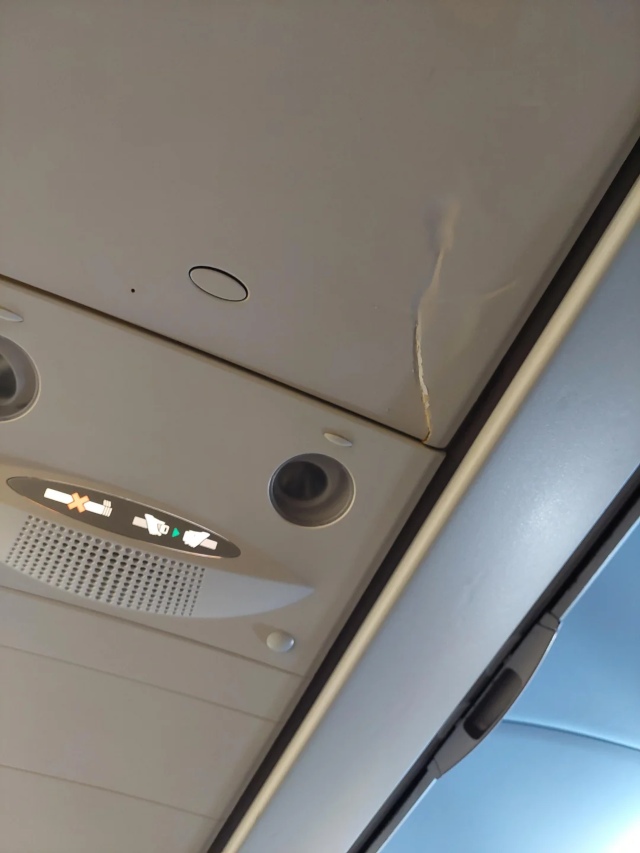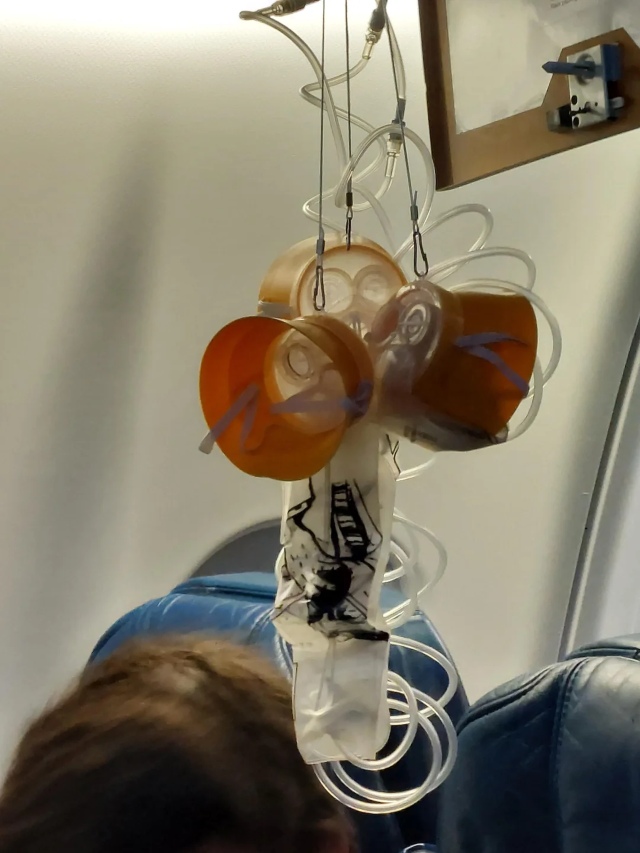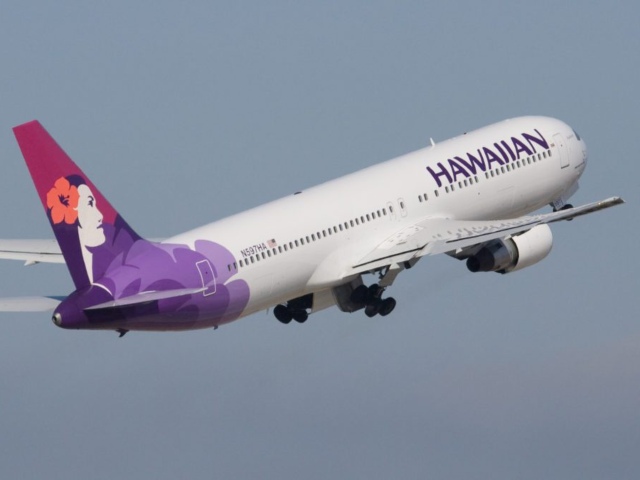[imagesource:dylanashe]
A Hawaiian Airlines plane was hit by severe turbulence while travelling over the Pacific Ocean. The aircraft apparently even nosedived, sending passengers flying out of their seats and crashing onto the floor.
CNN reported that five hours into an 11-hour flight from Honolulu to Sydney, Australia, on Friday, the plane hit strong winds and began to experience “unexpected severe turbulence”.
Several flight attendants and passengers were injured after the terrifying drop, and some were even hospitalised:
Three of the injured were released after being assessed on scene, and four others were taken for further evaluation, the airline said. Those four included one passenger and three flight attendants. The three flight attendants have since been released, the spokesperson said.
The extreme turbulence caused the ceiling of the plane to bust open and oxygen masks to deploy, leaving passengers in a tizzy, per New York Post:
“The plane just dropped. We weren’t prepared.” Sultan Baskonyali, a passenger aboard the chaotic flight, told ABC News.
“There was a man in front of us who had gone all the way up. His head was on the roof. And dropped back down,” Baskonyali added.
One passenger shared two images to Reddit of “cabin damage caused by human bodies flying out of seats” when the plane was suddenly buffeted by the strong winds:



Thankfully, the plane, carrying 163 passengers and 12 crew, landed without further incident.
But the bad news is that flights are getting bumpier. CNN notes that there have been several reports of dangerous – and in one instance fatal – turbulence in recent months.
Besides severe turbulence on another Hawaiian Airlines flight injuring 36 people flying from Arizona to Honolulu in December, requiring 20 people to be taken to emergency rooms, there was a more intense case in March. That’s when severe turbulence on a private jet resulted in the death of a former White House official. This tragic death by turbulence was also days after seven people were transported to hospitals after a separate commercial flight hit significant turbulence.
Science writer and deputy editor at Physics Magazine, Katherine Wright wrote an alarming Scientific America article about clear-air turbulence becoming more frequent and more intense as the atmosphere warms.
Pilots can usually see turbulence ahead of them relatively easily when it’s inside a storm or among clouds, but clear-air turbulence causes more havoc as it is not visible, leaving almost no time to prepare:
Over the past four decades clear-air turbulence has increased by up to 55 percent in various regions around the world. Models predict another 100 to 200 percent increase over the next 30 to 60 years.
Paul Williams and his colleagues at the University of Reading in England also found that turbulence in the North Atlantic jet stream increased in frequency by 17% to 55% from 1979 to 2020.
The greatest increase was for the most severe class of turbulence, defined as having a g-force greater than 1 g. At this g-force, anything that isn’t bolted to the plane, including your stomach, will float momentarily because the turbulence causes the plane to accelerate downward faster than gravity does. If you’re not buckled up, you will lift out of your seat as the plane rapidly drops a few tens of meters.
While Williams says that an eight-hour flight today might contain 10 to 15 minutes of clear-air turbulence, projections indicate that the extent of this turbulence will double or triple over the next few decades as warming from climate change increases wind shears in the jet stream.
Just be sure to take those seatbelt warning lights seriously from now on.
[sources:newyorkpost&scientificamerica&cnn]





